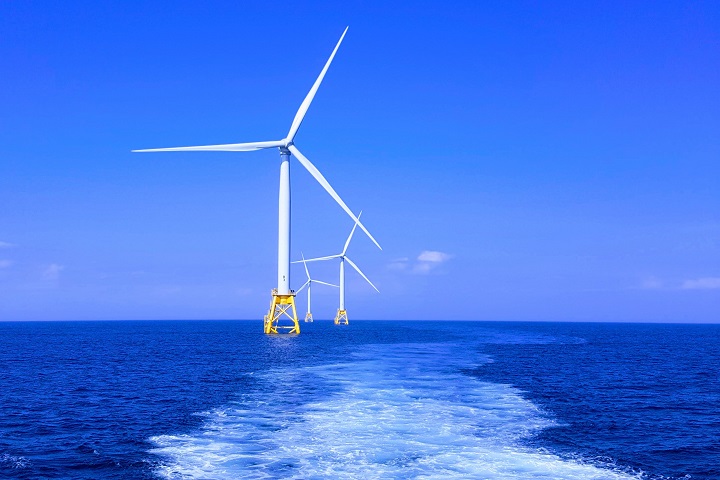Technology
Steam Turbines: How Water Powers the Planet
They’re part of a broader category of machines known as “heat engines” that operate by converting thermal energy into mechanical energy. Steam Turbines: How Water Powers the Planet.

Steam turbines are fascinating machines that use the power of steam to generate electricity, power ships, propel airplanes, boost missiles, and so much more. The technology behind steam turbines has been around for more than a century, yet it continues to be an important tool for generating power sustainably. Here’s more about what steam turbines are, how they work, and some of the fascinating ways they’re used in modern technology.
Most of us have experienced the power of steam in one form or another. Whether it’s the steam that rises from a boiling pot of water or the steam that escapes from a jet of hot water as we take a shower, there’s something hypnotic and almost magical about this invisible force. Steam turbines are perhaps the best example of what steam can do when harnessed in a controlled way. They’re part of a broader category of machines known as “heat engines” that operate by converting thermal energy into mechanical energy.
1. The Fundamentals of Steam Turbines: Thermodynamics
To understand how steam turbines work, we first need to understand a little bit about thermodynamics. At their core, steam turbines rely on the fact that water expands when heated. When water is turned into steam (which happens when it’s heated to its boiling point), it expands rapidly, creating a huge amount of pressure. If this pressure is directed carefully, it can be used to rotate a turbine blade, which is connected to a shaft. As the blade rotates, it generates mechanical energy, which can be used to power a variety of machines.
In scientific terms, thermodynamics is the study of energy and how it’s transferred between different systems. In the case of steam turbines, heat (or thermal energy) from a fuel source (usually oil or natural gas) is used to turn water into steam. This process releases thermal energy, which then transforms into mechanical energy as it passes through the turbine blade. The resulting mechanical energy can be used to generate electricity, propel ships, or even power rockets.
Steam turbines themselves need control systems such as the GE Mark VI Turbine Control System in order to work. These control systems are designed to ensure the turbines operate as efficiently as possible while also minimizing emissions. They can be used to regulate the speed and pressure of the turbine, helping operators maximize energy output while also controlling costs.
2. The Advantages of Using Steam Turbines
One of the most common uses for steam turbines is to generate electricity. In fact, the vast majority of the world’s electricity is generated using steam turbines. The process typically works like this: water is heated under high pressure until it boils and turns into steam, which then passes through a series of turbine blades. As each blade is driven by steam, the rotor connected to the turbine blade rotates, generating electricity. Steam turbines are known for their efficiency, as they can convert up to 80% of the thermal energy in the steam into mechanical energy.

Another interesting use for steam turbines is in ships. Many large ships use steam turbines to power their propellers, allowing them to travel vast distances on the open sea. The turbines are often powered by boilers that burn oil or coal, creating the steam needed to generate power. Steam turbines are ideal for use in ships because they’re highly reliable and can generate large amounts of power with relative ease.
Steam turbines are also used in airplanes, although in a slightly different way. Instead of generating power directly, they’re used in jet engines as a way to compress and heat the air that’s passing through them. The high temperatures and pressures created by steam turbines help to propel the airplane forward by providing additional thrust. Without steam turbines, modern jet engines would be far less efficient and less powerful.
Missiles and rockets are another area where steam turbines are being used in innovative ways. These propulsion systems work by taking highly pressurized steam and directing it through a nozzle, creating a huge amount of thrust. This allows missiles and rockets to launch themselves into space or fly at hypersonic speeds. Without the power of steam turbines, the technology behind these systems simply wouldn’t be possible.
3. AX Control
Companies such as AX Control are essential to the running of steam turbine operations. AX Control is based in Raleigh, North Carolina, and supplies industrial automation parts to a global customer base. It focuses its expertise on parts such as control systems for steam turbines, so it can advise customers on the very best parts for their specific needs.
This helps to ensure high productivity and efficiency for industries and companies that use steam turbines, which keep steam turbines working effectively across the world. James Dodson, Managing Director of AX Control Inc, said: “Keeping steam turbines running efficiently the world over is a top priority for us. Our engineers and technicians at AX Control are all experts in this field, so we can help customers source exactly the right components for their needs.”
There you have it: an in-depth look at how steam turbines work and some of the fascinating ways they’re being used in modern technology. As we move towards a future powered sustainably by renewable sources of energy, steam turbines are likely to play an increasingly important role. Whether they’re generating electricity, powering ships, airplanes, missiles, or any other machine that needs a reliable source of mechanical energy, steam turbines are sure to be a big part of our lives for many years to come.
Find out more about AX Control and the role they play in keeping steam turbines fully operational.
-

 Instagram4 years ago
Instagram4 years agoBuy IG likes and buy organic Instagram followers: where to buy them and how?
-

 Instagram4 years ago
Instagram4 years ago100% Genuine Instagram Followers & Likes with Guaranteed Tool
-

 Business5 years ago
Business5 years ago7 Must Have Digital Marketing Tools For Your Small Businesses
-

 Instagram4 years ago
Instagram4 years agoInstagram Followers And Likes – Online Social Media Platform















